
Naughty Marietta is a 1935 American romantic musical film based on the 1910 operetta of the same name by Victor Herbert. Jeanette MacDonald stars as a princess who flees an arranged marriage. She sails for New Orleans and is rescued from pirates by Captain Richard Warrington. Five of Herbert's most famous songs come from the score of Naughty Marietta, with words by lyricist Rida Johnson Young: "Ah! Sweet Mystery of Life", "Italian Street Song", "Neath the Southern Moon", "I'm Falling in Love with Someone" and "Tramp! Tramp! Tramp! ". Additional lyrics for several of Herbert's songs were penned for the film by Gus Kahn. The film was written by Frances Goodrich, Albert Hackett, John Lee Mahin and Rida Johnson Young.

Akim Mikhailovich Tamiroff was an Armenian-American actor of film, stage, and television. One of the premier character actors of Hollywood's Golden Age, Tamiroff developed a prolific career despite his thick accent, appearing in at least 80 motion pictures over a span of 37 years.

Love on the Run is a 1936 American romantic comedy film, directed by W.S. Van Dyke, produced by Joseph L. Mankiewicz, and starring Joan Crawford, Clark Gable, Franchot Tone and Reginald Owen in a story about rival newspaper correspondents assigned to cover the marriage of a socialite. The screenplay by John Lee Mahin, Manuel Seff and Gladys Hurlbut was based on a story by Alan Green and Julian Brodie. Love on the Run is the seventh of eight cinematic collaborations between Crawford and Gable. At the time of its release, Love on the Run was called "a lot of happy nonsense" by critics, but was a huge financial success, nonetheless.
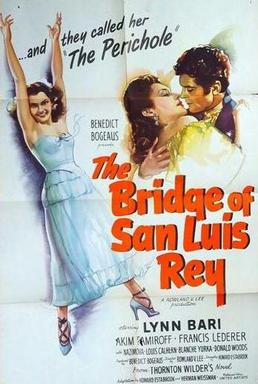
The Bridge of San Luis Rey is a 1944 drama film made by Benedict Bogeaus Productions and released by United Artists. It was produced and directed by Rowland V. Lee with Benedict Bogeaus as co-producer. The screenplay by Howard Estabrook and Herman Weissman was adapted from the 1927 novel The Bridge of San Luis Rey by Thornton Wilder. The music score was by Dimitri Tiomkin and the cinematography by John W. Boyle and an uncredited John J. Mescall. The film stars Lynn Bari, Francis Lederer, Akim Tamiroff, Nazimova and Louis Calhern.
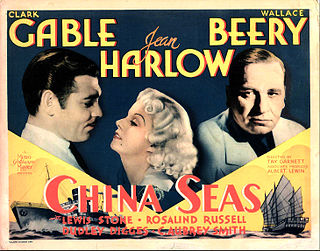
China Seas is a 1935 American adventure film starring Clark Gable as a brave sea captain, Jean Harlow as his brassy paramour, and Wallace Beery as a suspect character. The oceangoing epic also features Rosalind Russell, Lewis Stone, Akim Tamiroff, and Hattie McDaniel, while humorist Robert Benchley portrays a character reeling drunk from one end of the film to the other.

Men in White is a 1934 pre-Code film starring Clark Gable and Myrna Loy, and directed by Ryszard Bolesławski. The story is loosely based on the Sidney Kingsley Pulitzer-Prize-winning play of the same name. Due to suggestions of illicit romance and abortion, the film was frequently cut. The Legion of Decency declared the movie unfit for public exhibition.
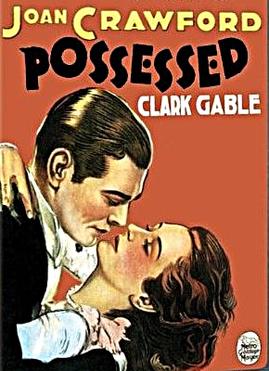
Possessed is a 1931 American pre-Code drama film directed by Clarence Brown, starring Joan Crawford and Clark Gable and released by Metro-Goldwyn-Mayer. The film is the story of Marian Martin, a factory worker who rises to the top as the mistress of a wealthy attorney. The screenplay by Lenore J. Coffee was adapted from the 1920 Broadway play The Mirage by Edgar Selwyn. Possessed was the third of eight film collaborations between Crawford and Gable.
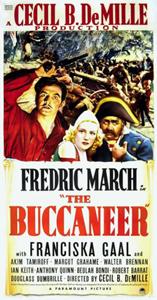
The Buccaneer is a 1938 American adventure film made by Paramount Pictures starring Fredric March and based on Jean Lafitte and the Battle of New Orleans during the War of 1812. The picture was produced and directed by Cecil B. DeMille from a screenplay by Harold Lamb, Edwin Justus Mayer and C. Gardner Sullivan adapted by Jeanie MacPherson from the 1930 novel Lafitte the Pirate by Lyle Saxon. The music score was by George Antheil and the cinematography by Victor Milner.
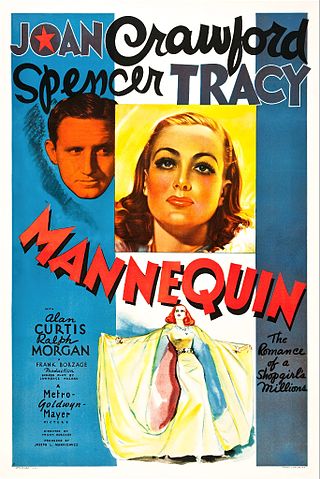
Mannequin is a 1937 American drama film directed by Frank Borzage and starring Joan Crawford, Spencer Tracy, and Alan Curtis. Crawford plays Jessie, a young working class woman who seeks to improve her life by marrying her boyfriend, only to find out that he is no better than what she left behind. She meets a self-made millionaire with whom she falls in love despite his financial problems.

I Take This Woman is a 1931 American pre-Code romance film directed by Marion Gering and starring Gary Cooper and Carole Lombard.

Beauty for Sale is a 1933 American pre-Code film about the romantic entanglements of three beauty salon employees. Based on the 1933 novel Beauty by Faith Baldwin, it stars Madge Evans, Alice Brady, Otto Kruger and Una Merkel.
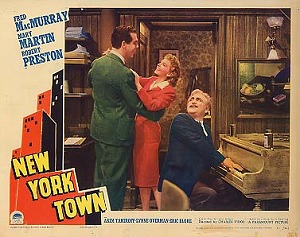
New York Town is a 1941 American romantic comedy film directed by Charles Vidor and starring Fred MacMurray, Mary Martin, Akim Tamiroff and Robert Preston. It was produced and distributed by Paramount Pictures. The film was written by Lewis Meltzer and an uncredited Preston Sturges based on a story by Jo Swerling.

Honeymoon in Bali is a 1939 American romantic comedy film. It is also known by the alternative titles Husbands or Lovers and My Love for Yours. Virginia Van Upp's screenplay was based on the short stories "Our Miss Keane" by Grace Sartwell Mason in The Saturday Evening Post of May 24, 1923, and "Free Woman" by Katharine Brush in Redbook magazine of November–December 1936. In 1936 Paramount announced a film of Our Miss Keane to star Merle Oberon to be produced.

A Scandal in Paris is a 1946 American biographical film directed by Douglas Sirk and starring George Sanders, Signe Hasso and Carole Landis. It loosely depicts the life of Eugène François Vidocq, a French criminal who reformed and became a famous French Prefect of Police during the Napoleonic era.

The Scarlett O'Hara War is a 1980 American made-for-television drama film directed by John Erman. It is based on the 1979 novel Moviola by Garson Kanin. Set in late 1930s Hollywood, it is about the search for the actress to play Scarlett O'Hara in the much anticipated film adaptation of Gone with the Wind (1939). This film premiered as the finale of a three-night TV miniseries on NBC called Moviola: A Hollywood Saga.
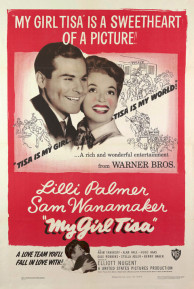
My Girl Tisa is a 1948 American period drama film directed by Elliott Nugent and starring Lilli Palmer, Sam Wanamaker and Akim Tamiroff. It is based on the play Ever the Beginning by Lucille S. Prumbs and Sara B. Smith.

The Vulture is a 1967 horror film directed by Lawrence Huntington and starring Robert Hutton, Akim Tamiroff, Broderick Crawford, and Diane Clare.

A Perfect Plan is a 2012 French action adventure comedy film directed by Pascal Chaumeil and starring Diane Kruger, Dany Boon, and Alice Pol. It is released as Fly Me to the Moon in Canada and Australia. Written by Laurent Zeitoun and Yoann Gromb, and based on a story by Philippe Mechelen, the film is about a woman in love who tries to break her family curse of every first marriage ending badly by dashing to the altar with a random stranger before marrying her boyfriend.
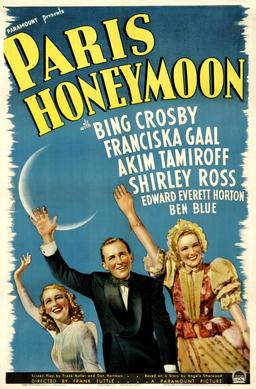
Paris Honeymoon is a 1939 American musical film directed by Frank Tuttle and written by Frank Butler and Don Hartman. The film stars Bing Crosby, Franciska Gaal, Akim Tamiroff, Shirley Ross, Edward Everett Horton and Ben Blue. Filming took place in Hollywood from May 23 to July 1938 and the film was released on January 27, 1939, by Paramount Pictures.

Texas Rangers Ride Again is a 1940 American Western film directed by James P. Hogan, written by William R. Lipman and Horace McCoy, and starring Ellen Drew, John Howard, Akim Tamiroff, May Robson, Broderick Crawford, Charley Grapewin, and John Miljan. It was released on December 13, 1940, by Paramount Pictures. It was a sequel to The Texas Rangers.






















